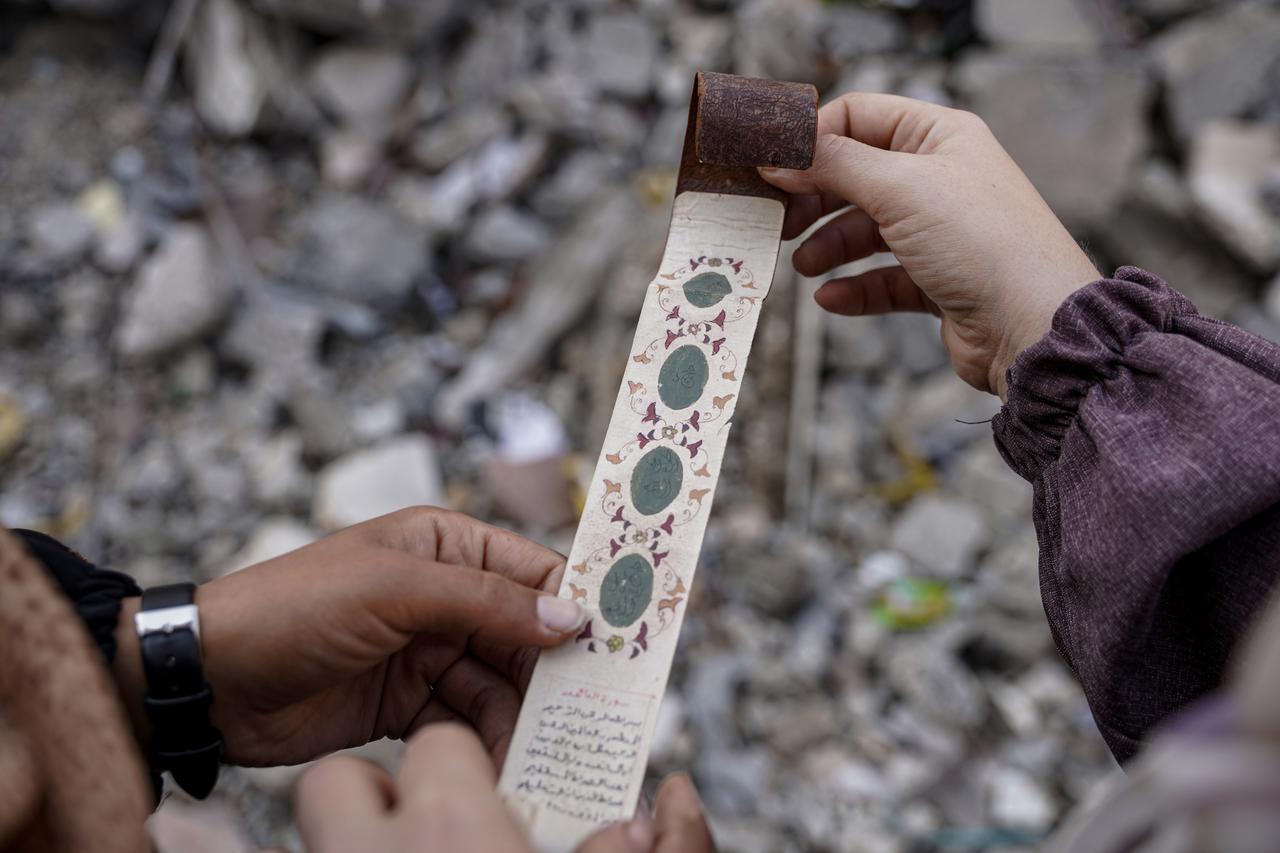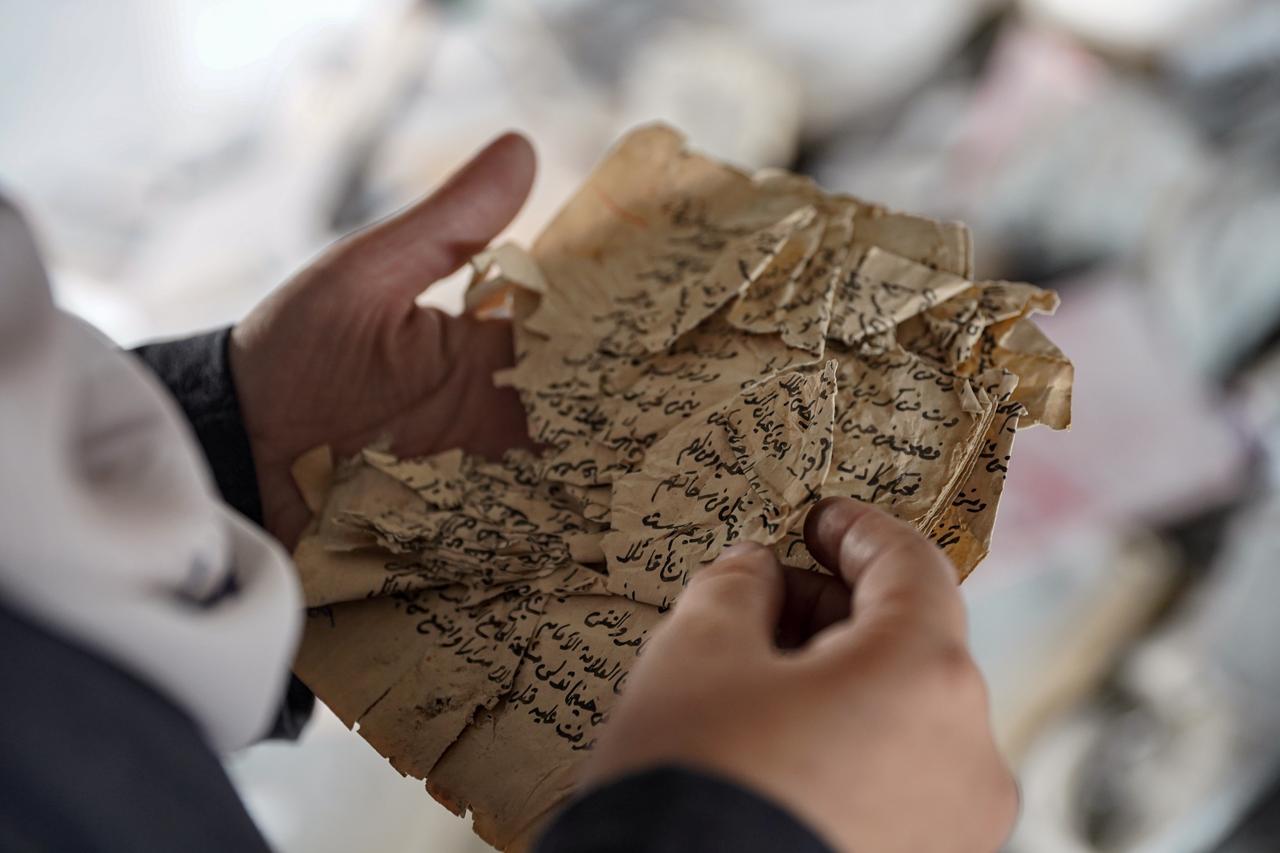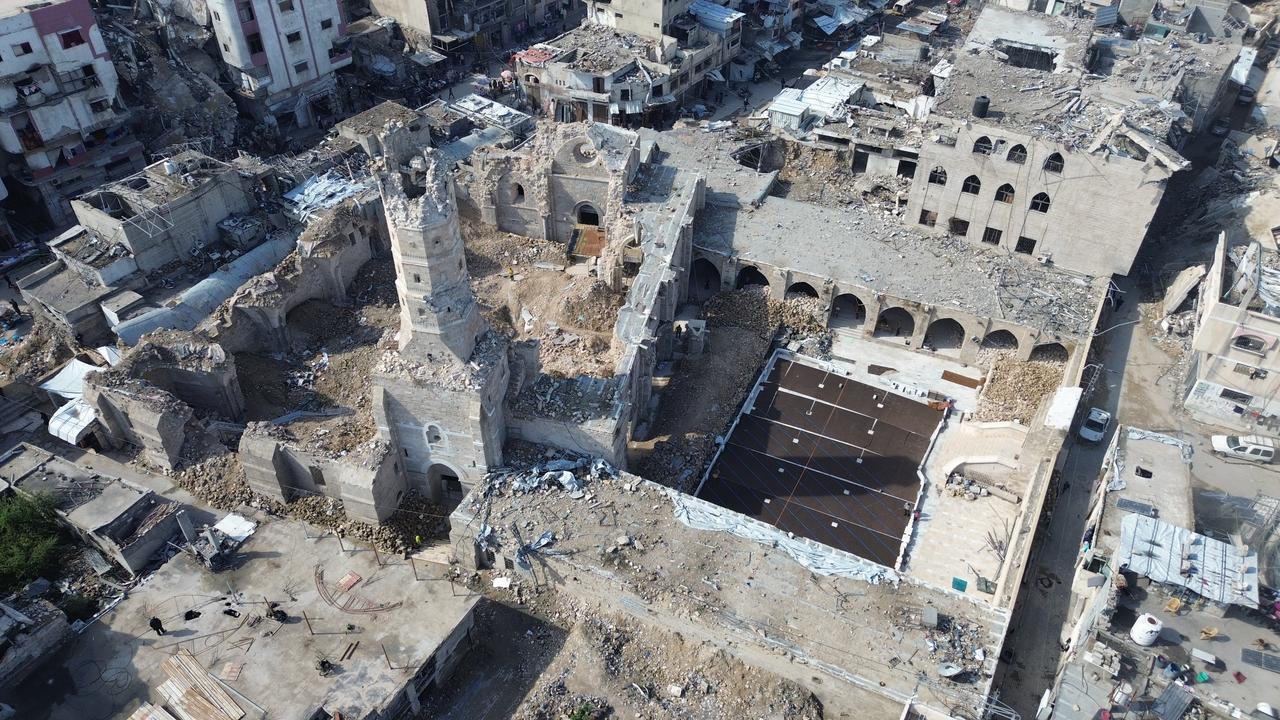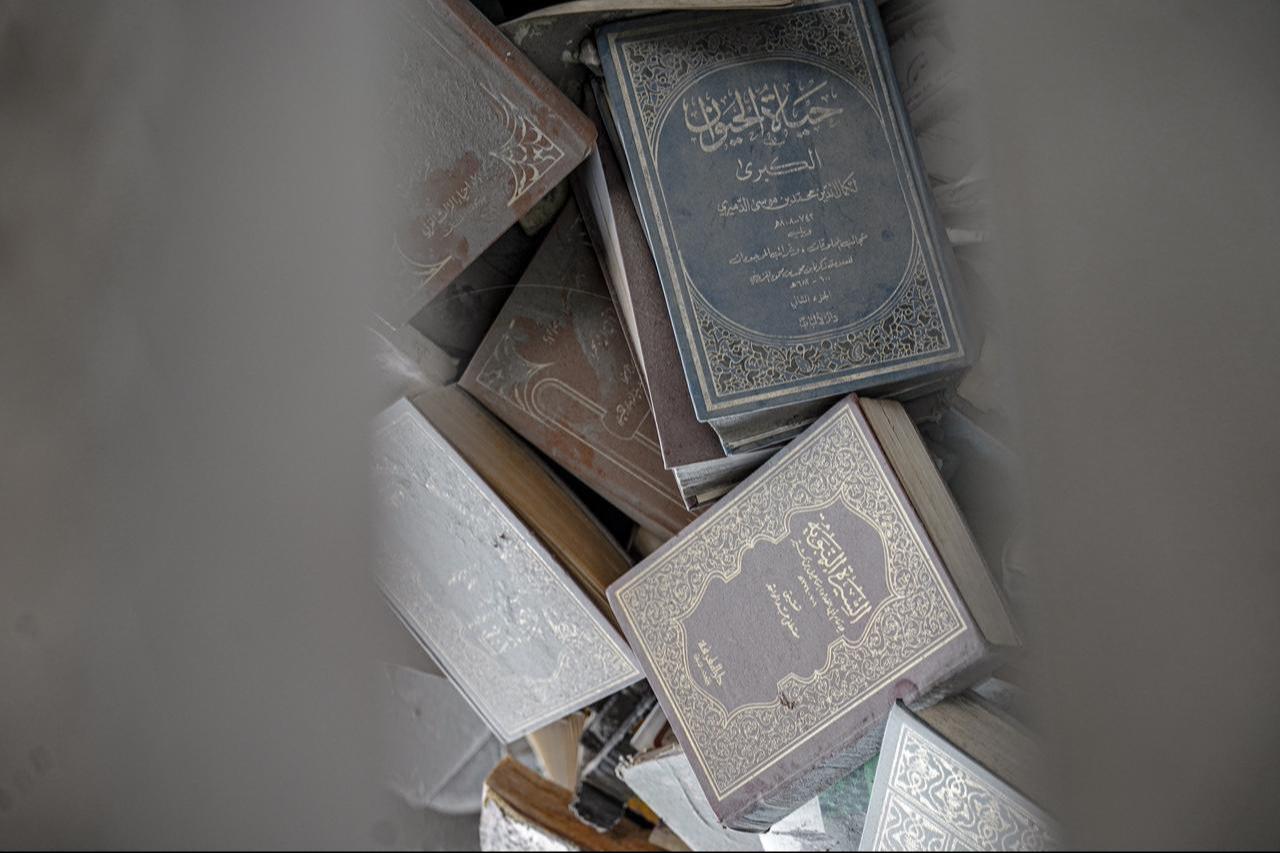
Experts in Gaza are racing against time to salvage what remains of irreplaceable written heritage after historic Ottoman-era manuscripts, rare books and archival documents were buried under rubble following intense bombardment. The destruction has left cultural specialists struggling to preserve a small number of surviving works and to locate those lost beneath collapsed structures.

The Ghaffari Tower in Gaza City, once the archival home of the cultural group Ayyun Ala el-Turath—meaning “Eyes on Heritage”—housed a rich collection of manuscripts, historical records and rare documents spanning the Ottoman period and later centuries. When the tower was completely destroyed on Nov. 20, most of the group’s unique written archives were lost under the debris.
The group is known for its long-standing efforts to preserve local cultural heritage through documentation, cataloging and conservation of historical artifacts. The manuscripts they protected included original handwritten texts, rare books and valuable documents of significant historical and cultural importance.

Many materials tied to Ottoman history in the Gaza Strip were heavily damaged due to ongoing bombardment, drastically reducing the number of surviving items. Experts working in the field say that several manuscripts are not only historically valuable, but are also considered one-of-a-kind due to their originality and recorded provenance. These were among the most fragile sources of knowledge about Gaza’s written cultural inheritance.
Despite limited means and the fragile and unstable conditions on the ground, a small group of cultural specialists and volunteers continues to search through debris, hoping to locate and recover any surviving traces of the archives. They are also working to secure what remains and prevent further deterioration.

Earlier this year, the same group had attempted to recover manuscripts from the ruins of the Great Omari Mosque, believed to be around 1,300 years old. The mosque had also suffered extensive damage, prompting a similar rescue mission. Their current efforts in the wreckage of the Ghaffari Tower are seen as a continuation of their struggle to preserve what little remains of Gaza’s written history.
Observers note that the destroyed manuscripts and written works are more than just historical documents. They represent centuries of intellectual, cultural and religious life, serving as evidence of a deep-rooted heritage that once thrived across the region.

Although most of the collection appears to have been destroyed, members of the group continue to show determination. In indirect remarks, they emphasized their commitment to “protecting the few remaining written heritage items that survived and locating the lost works after the debris removal efforts.”
They are holding on to the hope that, once the debris can be safely cleared, at least some of the manuscripts can be recovered, conserved, and protected from further harm.